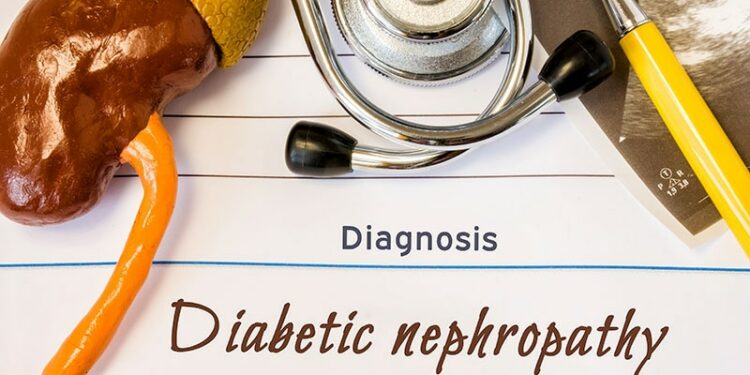[ad_1]
TOPLINE:
In patients with diabetes, serum fibroblast growth factor 23 (FGF23) levels may be an independent biomarker for early detection of diabetic kidney disease (DKD) and may improve the predictive performance of the recommended annual DKD screening measures, estimated glomerular filtration rate (eGFR) and albumin-to-creatinine ratio (ACR).
METHODOLOGY:
- Elevated levels of FGF23, a bone-derived hormone, are related to disordered bone metabolism and progression of chronic kidney disease in people with diabetes, clinical studies have found.
- To examine the association between FGF23 and incident DKD, researchers analyzed data from 1614 individuals with diabetes who participated in a large longitudinal community-cohort study in China that enrolled individuals aged 55-70 years old.
- At baseline, 199 participants had DKD, while 198 participants (mean age, 63 years; 71% women) developed incident DKD over a median follow-up of 4.6 years.
- Baseline serum FGF23 levels were measured using an enzyme-linked immunosorbent assay.
- Patients who developed DKD were stratified into three groups by risk for progression, based on eGFR and ACR values: Moderately increased risk, high risk, and very high risk.
TAKEAWAY:
- FGF23 levels were elevated at baseline in patients with DKD, elevated in the early stages of incident DKD, and increased with DKD severity, but no significant changes were noted in serum calcium and phosphorus levels.
- FGF23 was an independent predictor of incident DKD (adjusted odds ratio, 1.290; 95% CI, 1.063-1.565) in a model adjusting for multiple conventional risk factors.
- In subgroup analyses, baseline FGF23 also independently predicted incidence DKD in individuals with lower body mass index, worse glycemic control, and shorter duration of diabetes, as well as in individuals with baseline diabetic retinopathy.
- The addition of FGF23 to traditional risk factors significantly improved the performance of risk prediction models for incident DKD.
IN PRACTICE:
“Our study reveals an early and gradual increase in serum FGF23 levels during the course of DKD, suggesting that FGF23 could serve as a reliable independent biomarker for DKD risk prediction,” wrote the authors, who also noted its clinical potential for early identification of DKD in primary care and low-resource settings.
SOURCE:
This study was led by Dan Liu, PhD, and Shujie Yu, Department of Endocrinology and Metabolism, Shanghai Sixth People’s Hospital Affiliated to Shanghai Jiao Tong University School of Medicine, Shanghai, China, and was published online in Diabetes, Obesity and Metabolism.
LIMITATIONS:
This study was conducted in a community-based cohort of middle-aged and older adults in China, which may limit the generalizability of the findings to broader populations. The diagnosis of DKD relied on the presence of albuminuria and a reduced eGFR without renal biopsy information. A single baseline urine sample was collected from each participant. The relatively short follow-up period of 4.6 years may have impacted the full assessment of the association between FGF23 and incident DKD.
DISCLOSURES:
This study was supported by the National Key Research and Development Program of China, the Innovative Research Team of High-level Local Universities in Shanghai, the National Natural Science Foundation of China (NSFC), the General Fund of the NSFC, and other sources. The authors declared no conflicts of interest.
This article was created using several editorial tools, including AI, as part of the process. Human editors reviewed this content before publication.
[ad_2]
Source link : https://www.medscape.com/viewarticle/bone-derived-hormone-predicts-diabetic-kidney-disease-risk-2025a10003lr?src=rss
Author :
Publish date : 2025-02-12 06:50:35
Copyright for syndicated content belongs to the linked Source.














